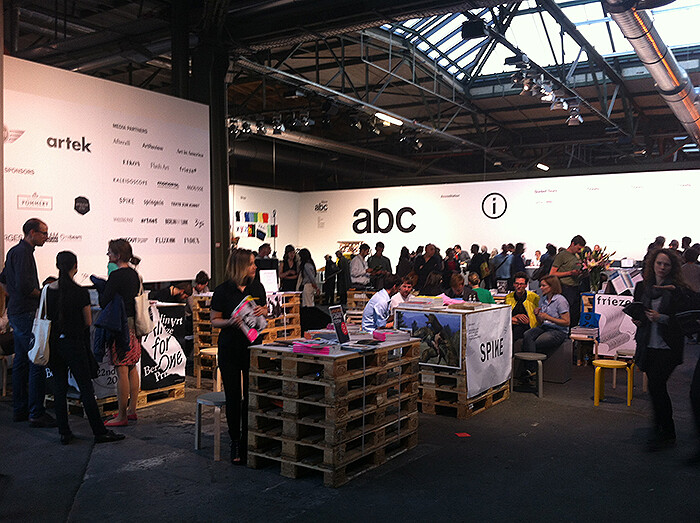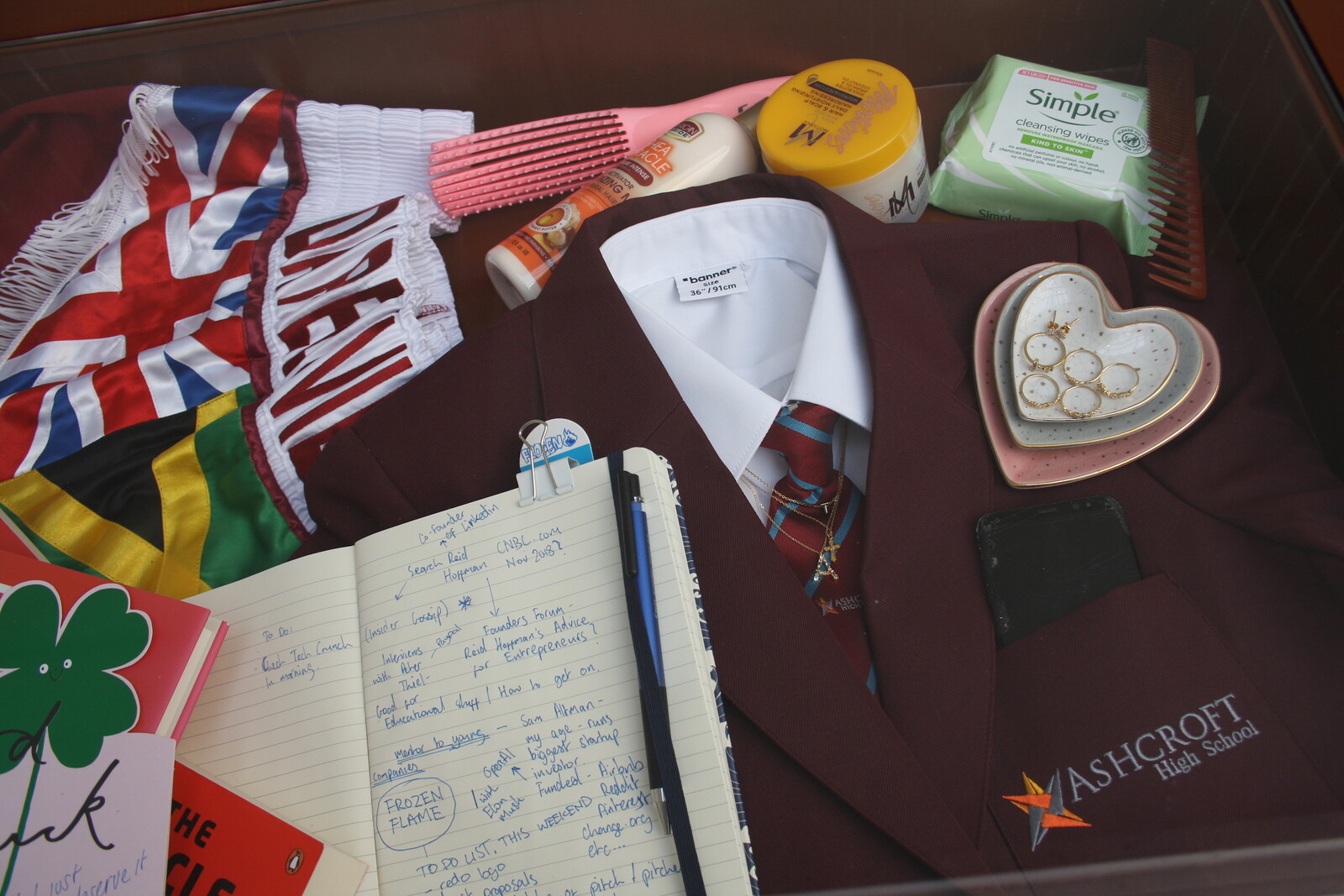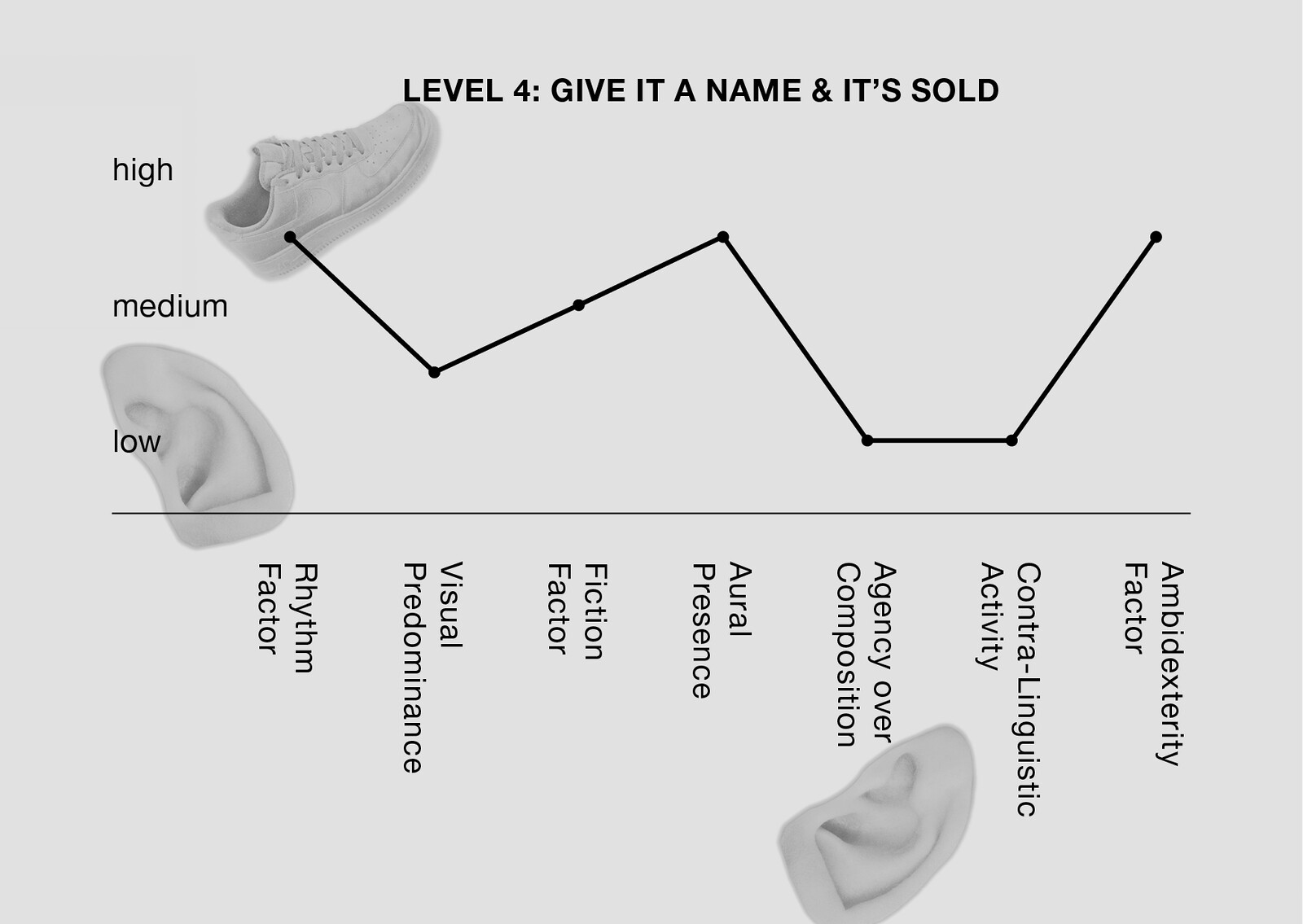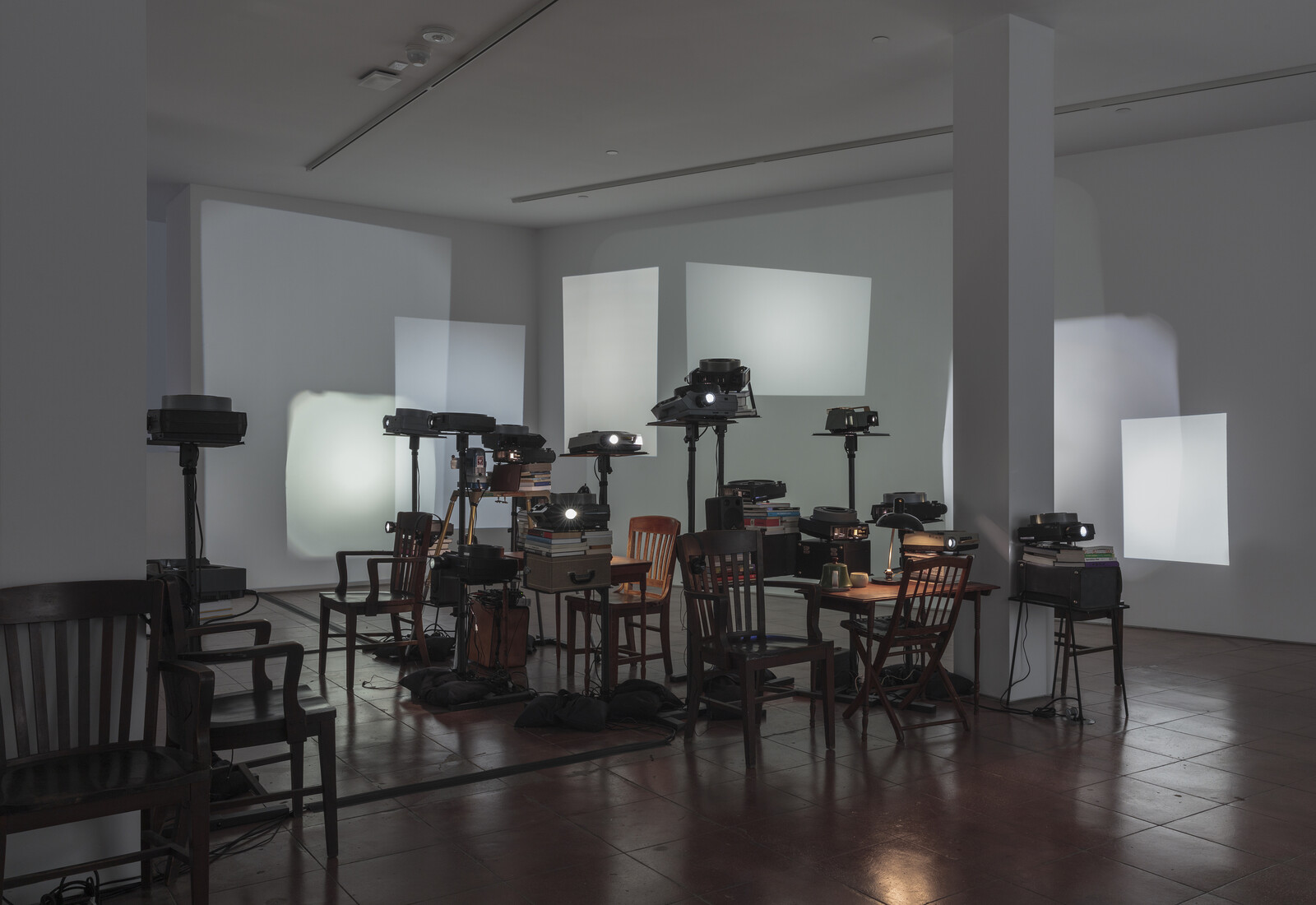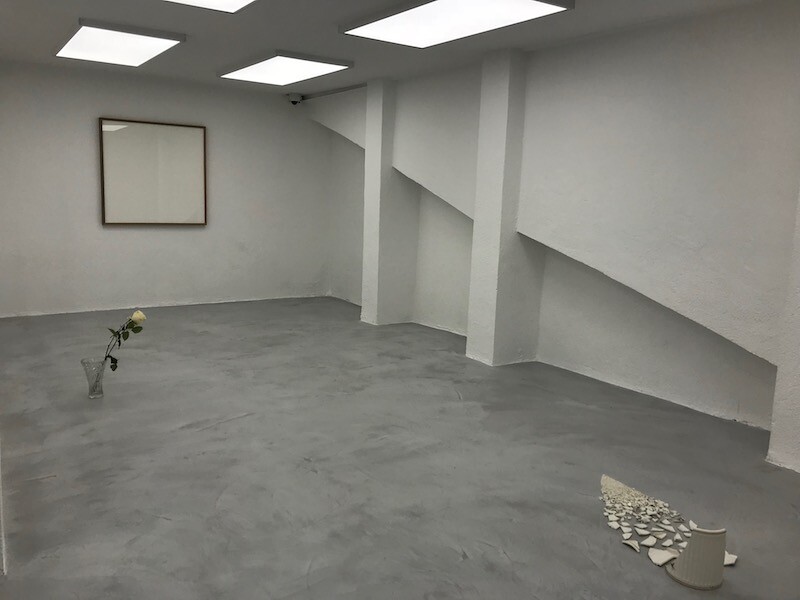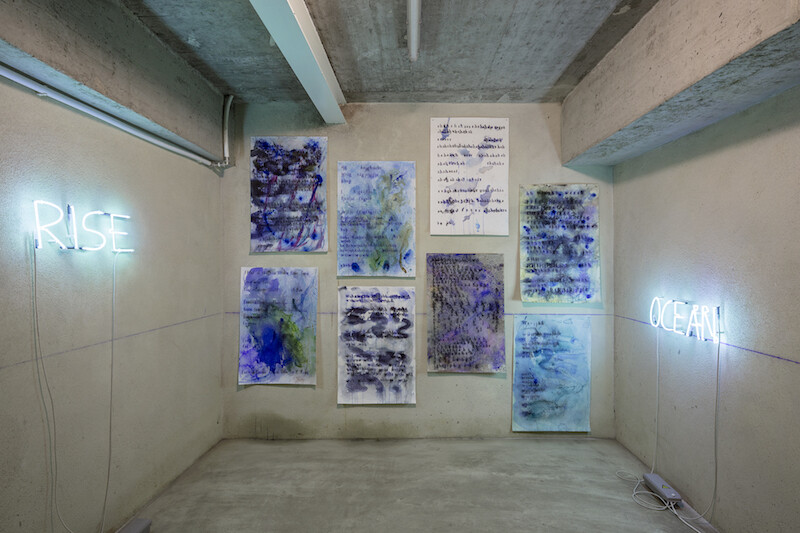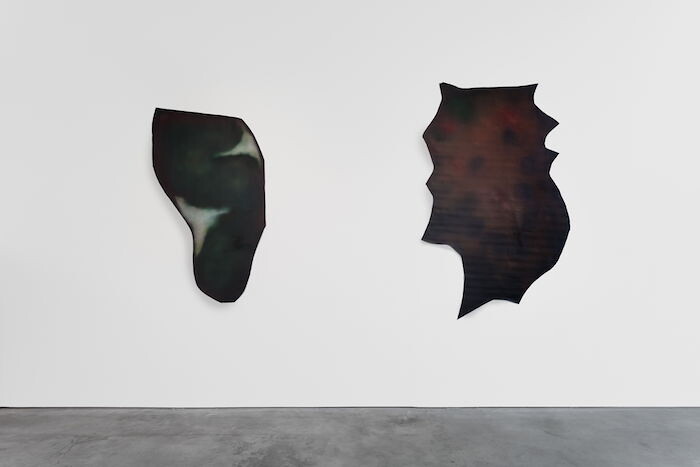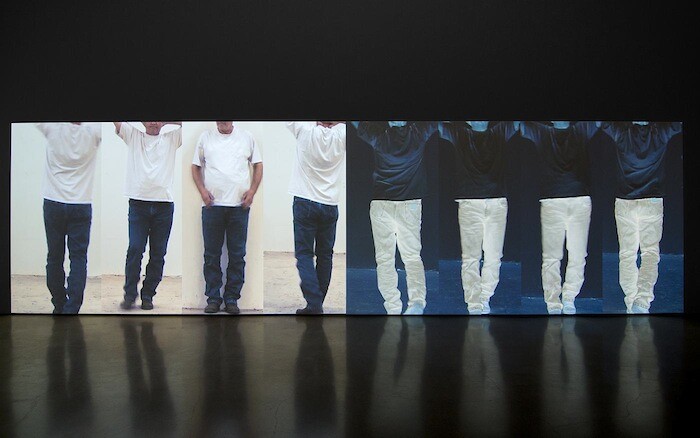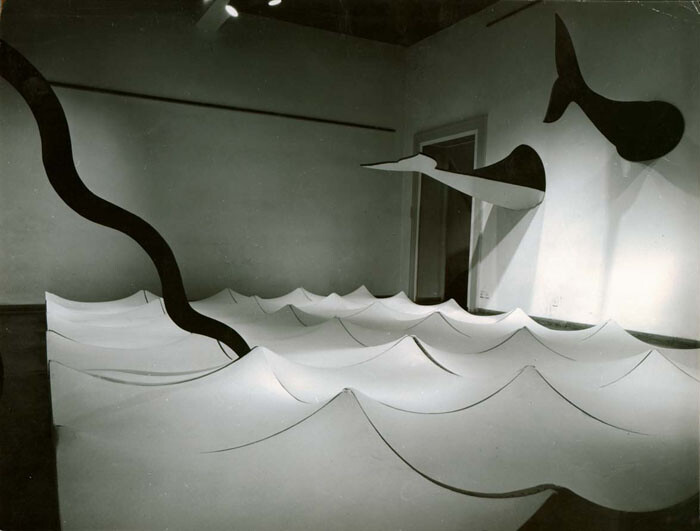The 7th edition of abc art berlin contemporary, as in previous years, embodies the event of exhibition rather than the collective buying and selling of art. As the fair’s organizers have prominently emphasized, this year includes a vast program of 40 performances, lectures, readings, sound works, films, and theater productions: the fair as a stage.
Some of the exhibited works employ this analogy quite literally. Berlin’s Galerie Buchholz displays an actual stage by Julian Göthe. Black tubing outlines schematic shapes on a starkly white podium, creating architectural depth in its flat structure through a sort of trompe l’oeil effect. On the stage there are two black café chairs seemingly waiting for imaginary actors to sit on them. Or are these actors the visitors themselves?
This question arises on several occasions. For example, for a fair, there is a remarkable number of large-scale installation pieces. However, instead of walking around them, the audience is often invited to walk through them, as in Kerim Seiler’s piece Relay (Situationist Space Program) (2012) at Grieder Contemporary, Zurich. The large, wood-and-steel, house-like construction was originally installed on the roof of the exclusive Crystal Hotel in St. Moritz. It shows a complex of sculptural objects that resemble functional architecture. In soliciting the audience’s participation, the construction becomes a space in which the observer is simultaneously author, performer, and audience.
Mexican artist José León Cerrillo does this more delicately at the booth of Stockholm gallery Andréhn-Schiptjenko with his installation The New Psychology (2014). At a distance, the large, thin metal frames that constitute the work—mostly quadrangular structures painted black, some in black-and-white, some with a hint of green—look like a pencil drawing. In reality, however, the frames create a simple labyrinth through which to walk, demonstrating—apart from their striking appearance—a very successful use of limited space. Cerillo uses language as a starting point and draws from graphic ideologies, linguistic systems, and modernist iconography in an attempt to explore possibilities for genuine abstraction. The subdued nature of the piece is a refreshing sight in the midst of bright color, glistening paint, and bulky objects.
Audience participation also activates the work of Fiete Stolte, jointly presented by Sassa Trülzsch and Helga Maria Klosterfelde (both Berlin). Here, you can take a “Super Selfie” of your iris in Stolte’s mobile photo studio Eye (2014). Using special lighting and a carefully arranged mirror, the set-up produces images of the viewer’s silhouette on his or her pupil. After three minutes, the certified unique picture can be taken home for 50 euros.
Gallery Taik Persons, also Berlin, shows the young Finnish artist Tanja Koljonen, who is currently Artist in Residence at Berlin’s Künstlerhaus Bethanien. The works presented consist of found images and fragments of written text. In one Act (2014) is a triptych of three title pages taken from the book Eros & Psyche—“The Scene,” “The Actors,” and “The Drama”—that, in the context of abc, produces an entirely different set of meanings: the performative and choreographic role of the fair’s various artists, dealers, and attendees.
The visitor, or anybody for that matter, is quite literally turned into a star in Guan Xiao’s work Action (2014) in a shared presentation between Berlin’s Kraupa-Tuskany Zeidler and Shanghai’s Antenna Space. In a three-channel video installation shown on monitors, Guan gives an affirmative portrayal of the beauty and rhythm of life through the connection between humans, technology, and nature: a deer dancing in a mud pool; a woman hoola-hooping in the mountains; a hand touching wooden carvings; a man immersed in a video game on a big screen. The end of the video shows a stage whose shiny, silver curtain seemingly implies the theatrical, spectacular nature of our everyday lives. “Everybody is a star,” the accompanying text reads. “When you find your position and make your own relevance, your world will start running.”
In general, a fair’s offerings are not meant to be given overly intellectual consideration but to be bought and sold. Still, it’s hard to miss that this year’s edition of abc shows a good range of works that deal with the philosophical notion of time, both seriously and humorously. Seemingly, the hetero-chronology of the Berlin art world emerges here as an attempt to insert spatial models into the temporal dimension and literally install time in space, as in Luc Fuller’s multidimensional portrayal of 12 clocks in Standing Clock Paintings (2014) for London’s Rod Barton.
In that sense, the event of the fair is the passage of time—the element upon which the full realization of these interactive works depends. Given this contingency, much of the work on view asks what potentialities make representation possible. And, when it is not possible, what other relationships may sustain value as an experience. Many gallerists have chosen work by artists that explore the position of the experiencing subject in relation to various technologies and systems of representation, but with the awareness that the construction of subjectivity is an open-ended process. In its exhibition of film, installations, and real-time performances, this year’s abc highlights the space of the fair as a production site for performance instead of—or at least in addition to—commerce.
